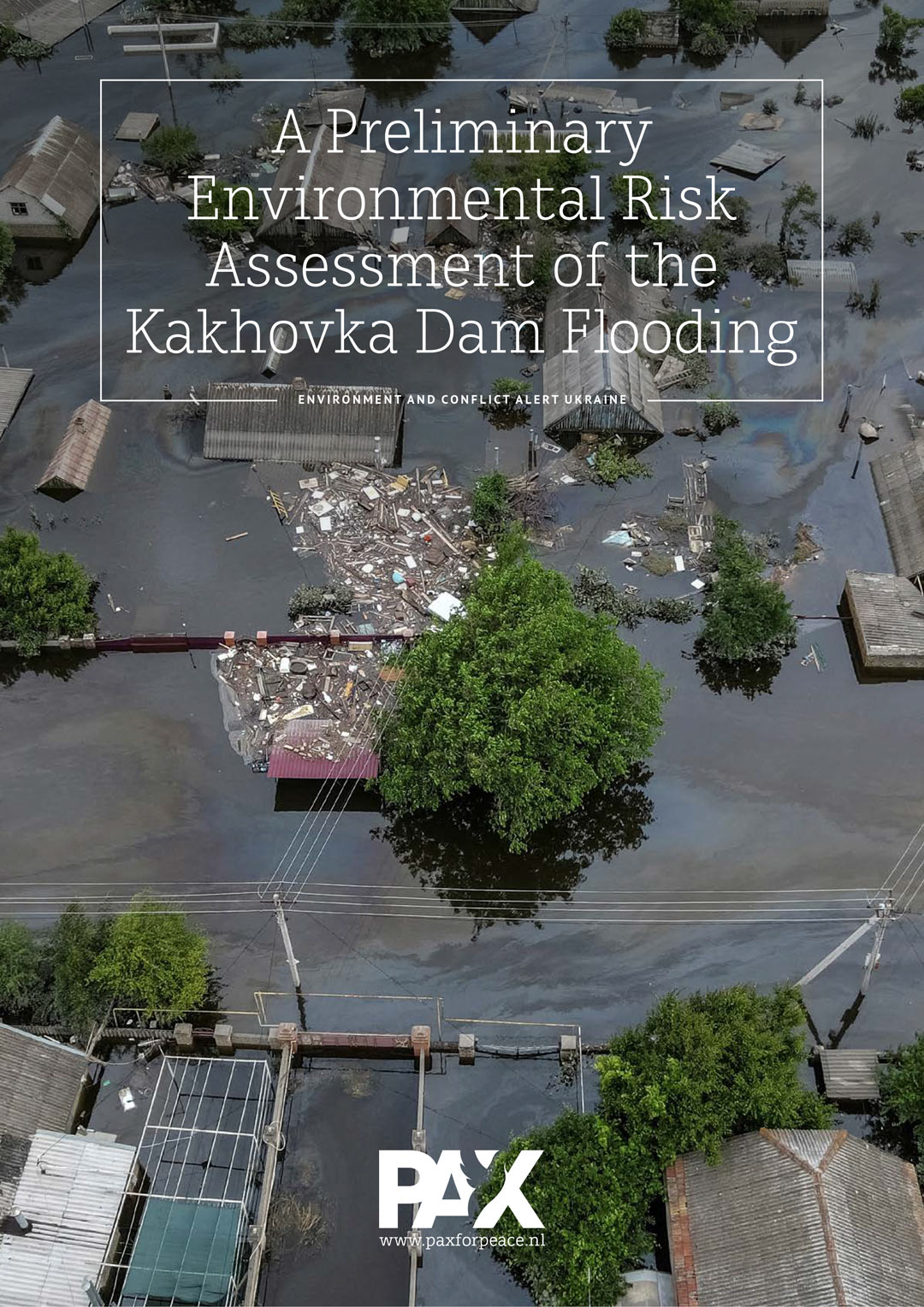The destruction of the Kakhovka Hydroelectric Power Plant by Russian forces in southern Ukraine on June 6 has been labeled by many in the environmental and policy circles as an act of ecocide due to its wide-spread and long-term consequences for the environment, public health, livelihoods and the region’s future overall. A new Environmental and Conflict Alert by PAX provides visualization of the key impacts and risks stemming from the Kakhovka dam destruction with its subsequent catastrophic flooding, along with a set of recommendations to Ukrainian authorities and the international community regarding the response to this environmental catastrophe.
The analysis is built upon open-source data on potential environmental hotspots such as industrial sites, fuel stations, and combining this with datasets provided by the Ukrainian government, flooding and housing damage data from UNOSAT and broader data on military positions and nature reserves. The report gives a first glimpse on the direct and long-term repercussions linked with hazardous facilities, the contamination of area with mines and unexploded ordnance, the spread of solid waste and debris from damaged buildings and lasting water security risks for agriculture and livelihoods from the empty Kakhovka Reservoir.
As part of its broader conflict-linked environmental monitoring, PAX also released a new analysis of damage to Ukraine’s fossil fuel industry. Based on open-source monitoring and satellite image analysis, the report identified at least 66 oil and gas facilities that were damaged by the war, including refineries, fuel depots and gas pipelines. The findings are crucial for any post-conflict environmental assessment, clean-up and remediation efforts of conflict-pollution, and for better protection of the environment and people depending on it. The report can be found here.
Previous Ukraine-focused Environment and Conflict Alerts of PAX focused on the environmental consequences of strikes against energy infrastructure and damage to agro-industrial facilities
Since February 24 2022, PAX, in collaboration with the Centre for Information Resilience (CIR), has been monitoring damage to Ukraine’s agro-industrial facilities, providing insight into the scale and intensity of the environmental dimensions of the war. This Environment and Conflict Alert on Ukraine is produced with funding from UN Environment Program (UNEP) and Stichting Samenwerkende Hulp Organisaties (SHO) / Giro 555.




